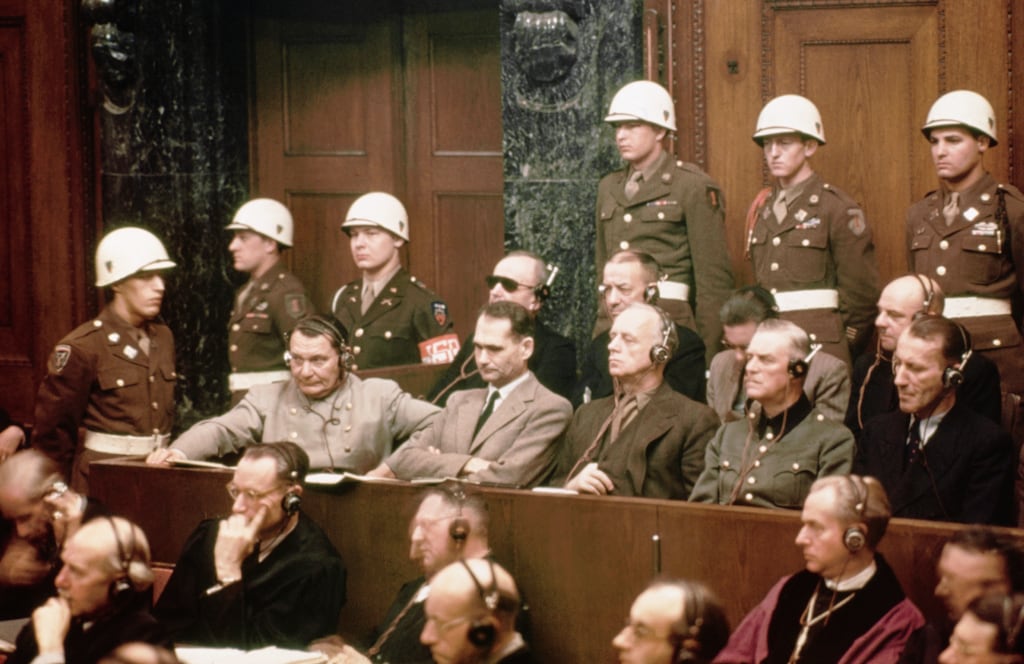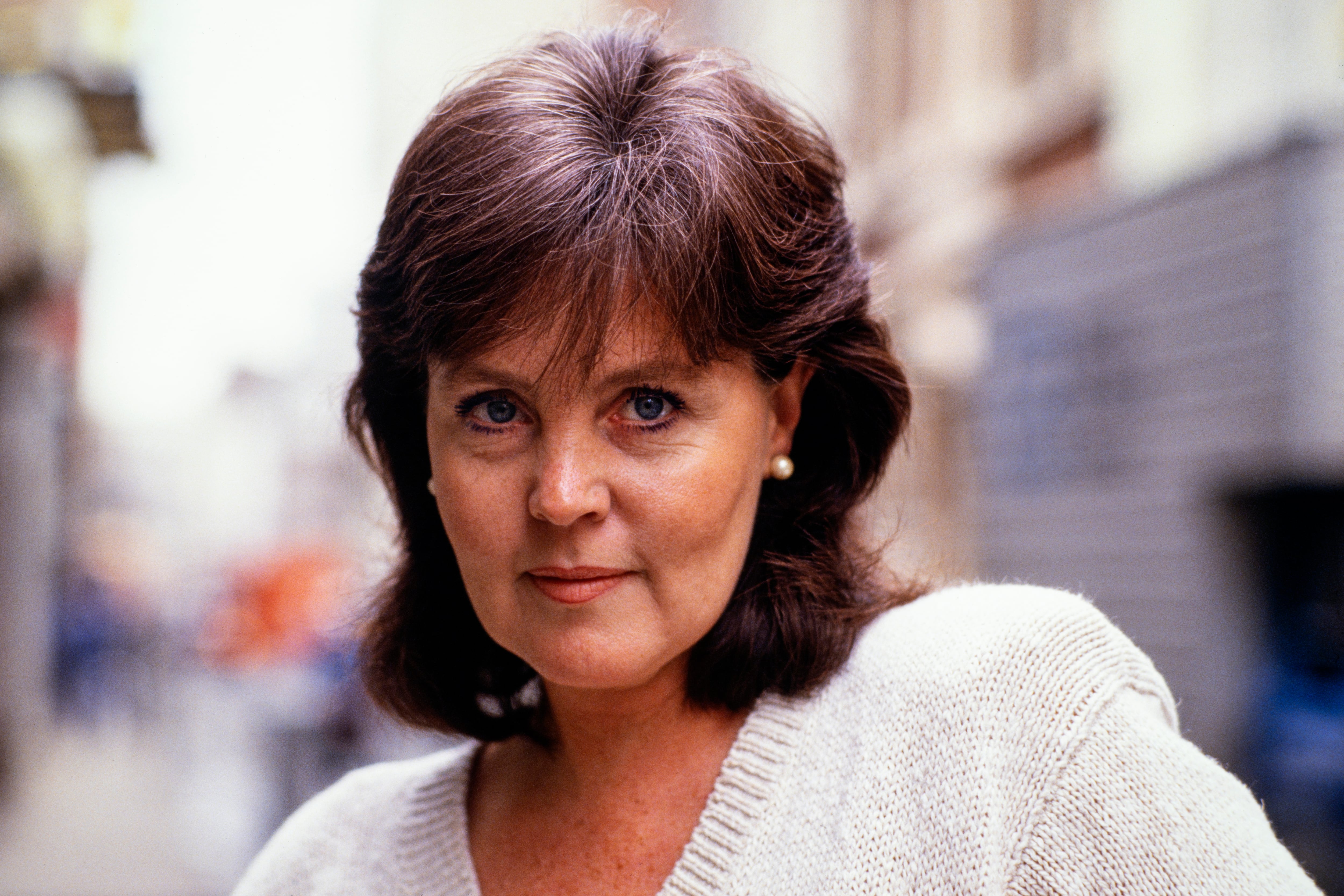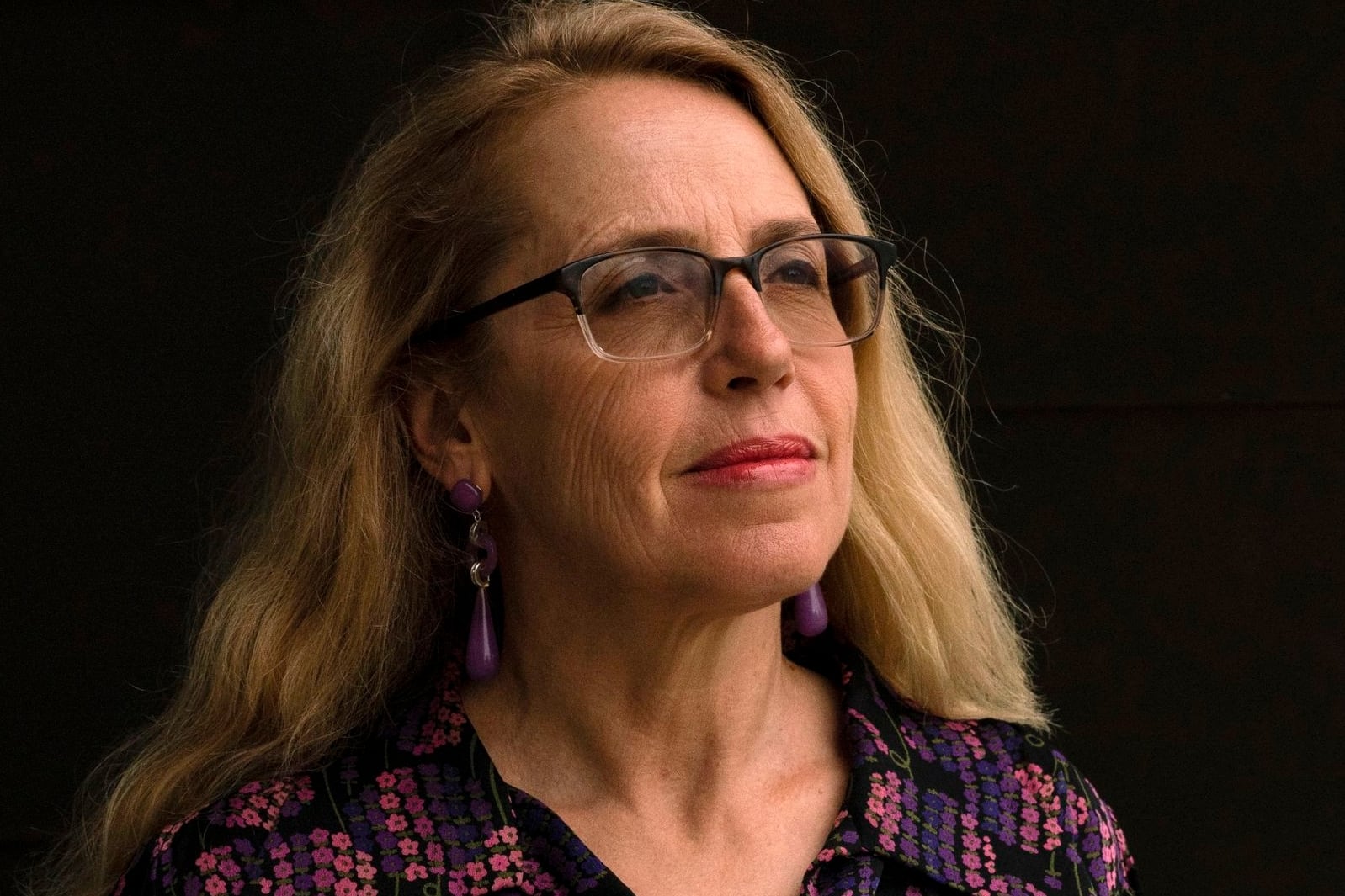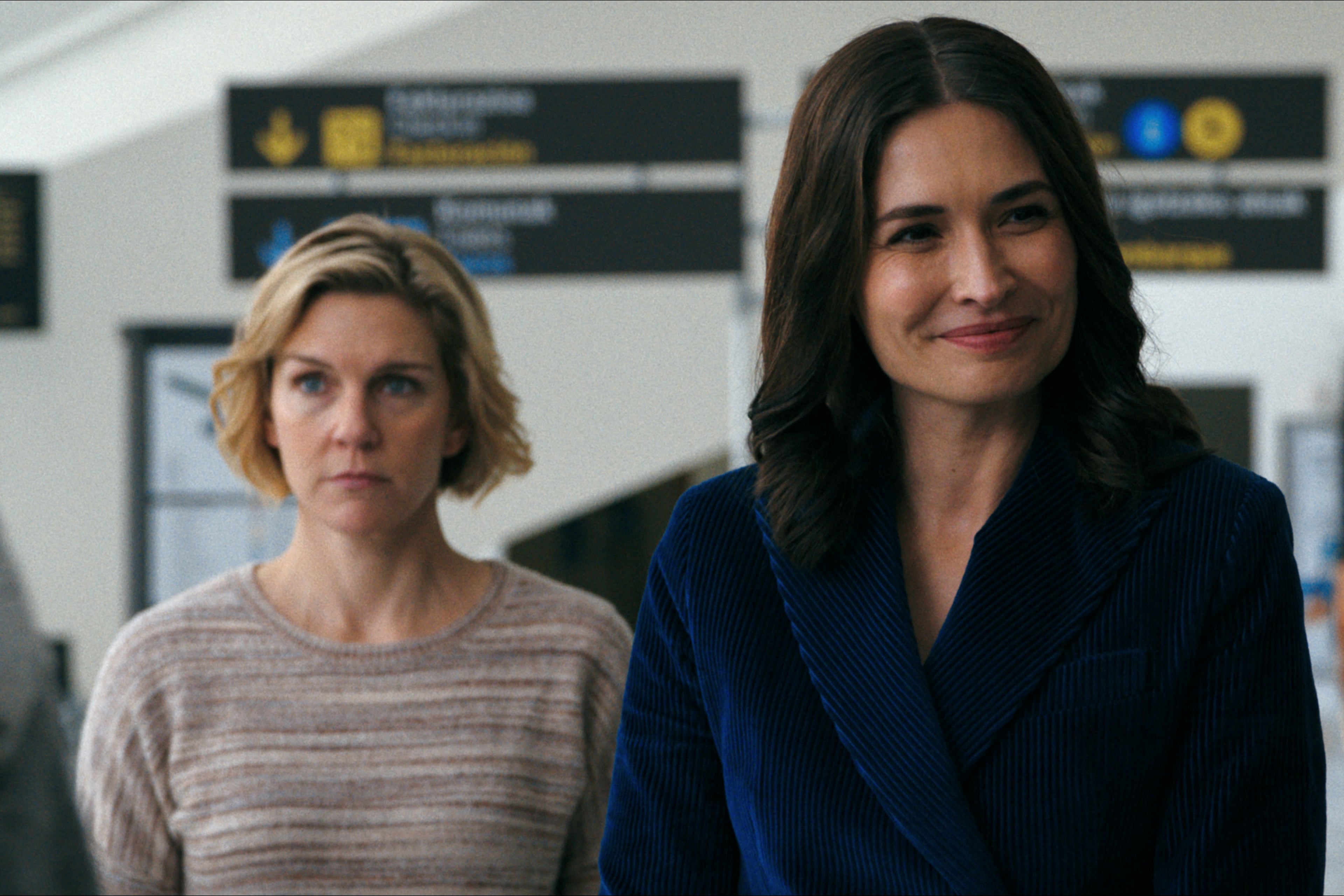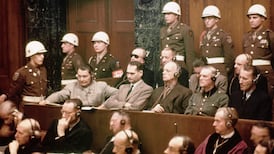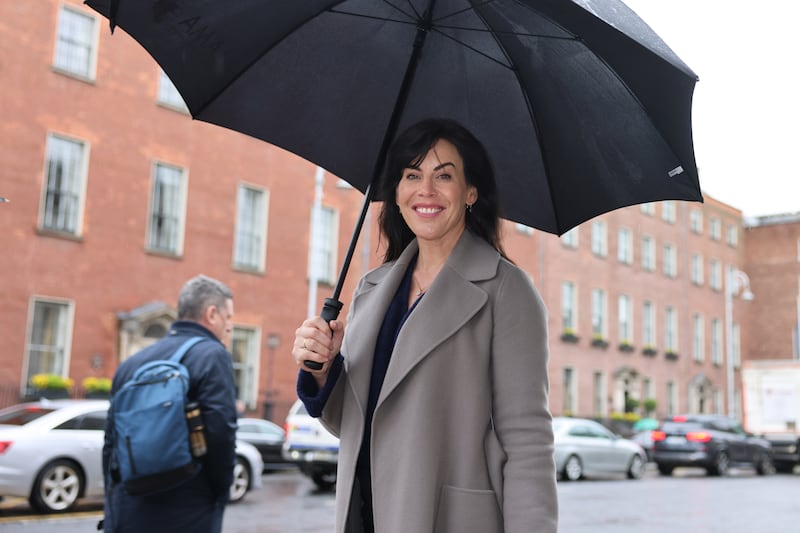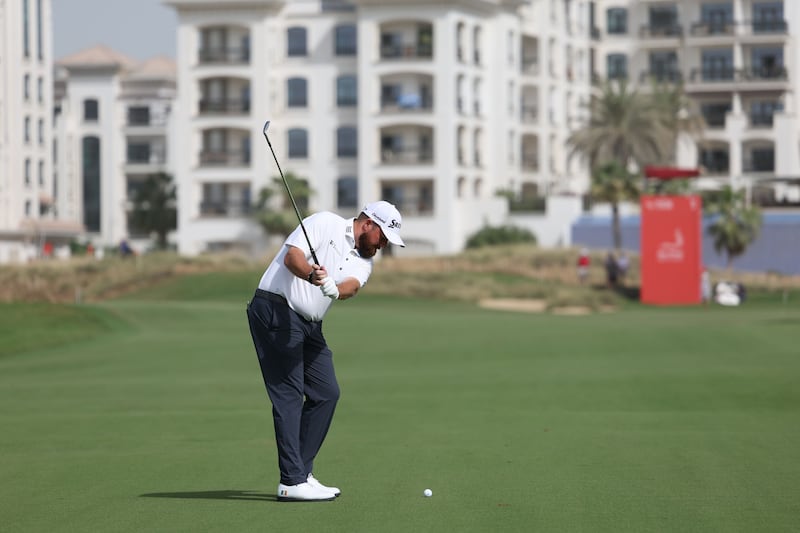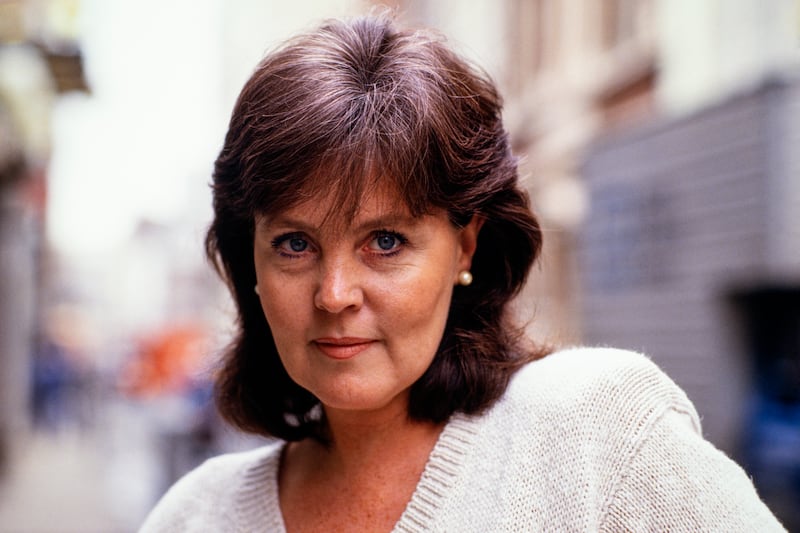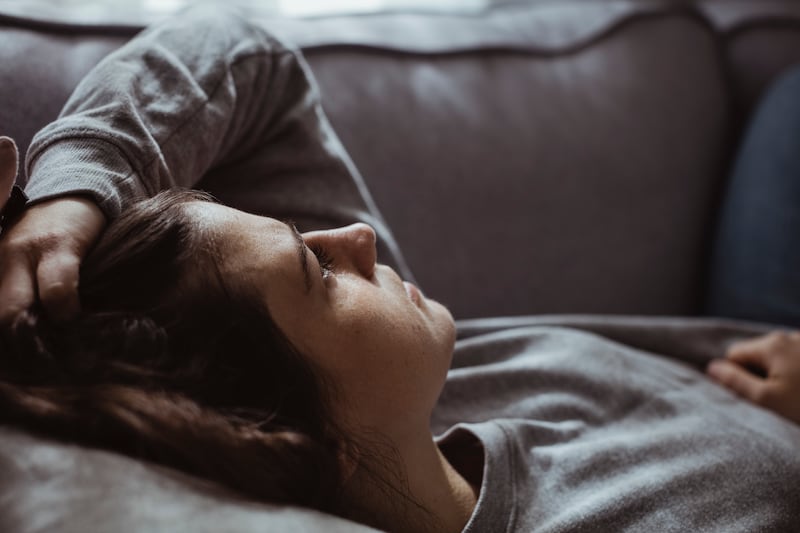When Hermann Göring and other leading Nazis entered a grand Nuremberg courtroom 80 years ago, watching eight yards away was Belfast man Seaghan Maynes.
Not yet 30, Maynes had moved from Belfast to London and joined Reuters the previous year, travelling through Europe with Gen George S Patton’s Third US Army. He witnessed the Normandy landings and, alongside Ernest Hemingway, the liberation of Paris – and the Buchenwald concentration camp.
On November 20th, 1945, though, Maynes was in courtroom 600 for what was billed as the trial of the century. An international military tribunal was, for the first time, placing individuals on trial for the most serious crimes during the second World War, in particular by the Nazi regime’s industrialised killing machine.

Eight decades on, the so-called Nuremberg trials are seen as the birthplace of international criminal law where the worst type of crime possible was defined: crimes against humanity.
READ MORE
Sitting today in the courtroom – wood panelling and high coffered ceiling – the air is dry but cool. At the stroke of noon, it’s showtime: the high curtains close automatically and a transparent gauze screen, the entire width of the courtroom, unrolls from the ceiling before the visitor gallery.
Projectors superimpose on today’s courtroom black and white newsreel footage from the moment 80 years ago when Nazism went on trial. The court chamber is empty but back then it was packed with people, the air humid and hot, thanks largely to huge floodlights necessary for the newsreel cameras.
Even 80 years on, the solemn concentration is palpable. With the entire 30,000-word indictment read out on day one, Irish Times readers learned in a Reuters front-page story the next day that the opening day had been “dominated by dullness”.

A “restless” Joachim von Ribbentropp, former German ambassador to London, fainted. To his left, “gaunt and impassive” former Hitler confidant Rudolf Hess collapsed with abdominal cramps.
Only Hermann Göring, number two in the Nazi hierarchy, remained focused, offering “a smile for the pressmen and paternal glances for his fellow prisoners”.
“He seemed in good spirits, and had an air, real or assumed, of confidence,” continued the first Nuremberg trial report. Heading Reuters coverage throughout the Nuremberg trials was Maynes. Born in Belfast in 1916, he worked for Reuters for most of his life, covering the foundation of the state of Israel, the Suez crisis and the McCarthy trials.

Eight years before he died of a heart attack in 1998, Maynes told his story to Hilary Gaskin for her book, Eyewitness at Nuremberg. Maynes recalled the tedium of the first five months of prosecutor testimony, the boredom broken occasionally by tinny jazz music echoing up from the transistor radios of military police outside the courtroom.
Things got interesting with the cross-examination of Göring, where the wily former Reichsmarshall “went on the offensive immediately”. Maynes remembered Göring, unlike others in the dock, offering “none of this craven, ‘I didn’t do it, I’m terribly sorry, it wasn’t my fault’”.
“His attitude was, ‘What the hell do you expect? We were fighting a war for our survival’”, said Maynes. Göring remained a dominant figure in the trial, and Maynes remembered him as “shrewd, very intelligent, extremely quick on the uptake”, often reducing the cross-examining US justice Robert H Jackson to “a state of impotence and fury”.
On the other hand, Göring was so “flummoxed” by the “politeness and deference” of British prosecutor Sir David Maxwell-Fyfe that he answered all questions put to him.

Of the 20 on trial in Nuremberg over 218 days, 10 were sentenced to death, seven were jailed (and many released early by German courts) while three were acquitted. Göring remained one step ahead of the tribunal, killing himself with cyanide after he was sentenced to death but before he was hanged. Subsequent Nuremberg hearings tried judges, doctors, diplomats and industrialists.
Today, the former press gallery in the Nuremberg court has been transformed into a thoughtful and immersive museum, with a few exhibits including the original defendant benches and chipped wooden US document crates, painted military green.
The Allies chose Nuremberg for the tribunal because, while much of the medieval city was in ruins, the city’s sprawling court complex from 1916, just outside town, survived the war largely intact. It also had an adjoining prison – now replaced with a modern facility – and there was an airport nearby. It was a fitting coincidence in other ways: Nuremberg hosted the largest Nazi rallies while, a decade earlier, eponymous laws legalised the exclusion of Jews from German life and began the country’s slide into moral ruin.


Visitors learn of the legal and procedural innovations established in Nuremberg, from the charge of crimes against humanity to the logistics of simultaneous in-court translation, involving a team of 350 linguists and technicians, radio headsets and nerves of steel.
Tucked discreetly in a corner, visitors can watch the same newsreel footage from Nazi camps shown in the Nuremberg courtroom: lifeless bodies with tortured faces being loaded into lorries and dumped in mass graves; a crematorium containing half-burnt bodies; naked survivors with stick-thin limbs and wary eyes.
[ The ‘enthusiastic’ Nazi who went to Donegal to learn Irish - and spy - in 1937Opens in new window ]
The Nuremberg museum attracts 160,000 people annually, three-quarters from outside Germany. Museum director Nina Lutz hopes visitors leave with a better understanding of the so-called “Nuremberg principles” and the post-1945 determination of the international community to “work through crimes through the means of law and not revenge”.

In 2002 the International Criminal Court (ICC) was established to do just that and is seen as the child of Nuremberg. But it has faced sustained pressure from non-members such as the US and Israel. That pressure has increased after it issued an arrest warrant against Israeli prime minister Binyamin Netanyahu on suspicion of war crimes and crimes against humanity over Israel’s response to the October 7th, 2023 Hamas-led attacks.
Germany is an ICC member but also feels a Holocaust-related historical responsibility to Israel and has criticised the arrest warrant. So, 80 years after Nuremberg, what will happen if anyone presses Berlin to decide between Israel and the ICC’s Nuremberg inheritance to defend international law?
“How things look politically is up to the decisions of politicians but, legally speaking, all members of the ICC are obliged to implement arrest warrants,” said Dr Gurgen Petrussian, director of the International Nuremberg Principles Academy, which trains new generations of lawyers and public servants in international and human rights law.
Leading international law professor and lawyer Philippe Sands is also author of East West Street, about the Nuremberg trials and some of its protagonists. He concedes that international law faces a “difficult moment” on this 80th anniversary, but remains a “long game”.
“We face hurdles right now, but they will be overcome,” says Prof Sands. “No one ever said it was going to be easy, or the path would be clear.”
Near the end of his life, Maynes was ambivalent about Nuremberg, viewing it as a seriously flawed “revenge trial” but also a necessary “showpiece”.
“The purpose was to show crime followed by punishment as an example to others,” he told Gaskin in her 1990 book. “But the legal process was very suspect. They made a charge to fit a crime, after the crime had been committed.”

Decades later, it was clear Maynes was still not certain that Göring and his Nazi allies got a fair trial in Nuremberg
“The possibility of the German defendants getting witnesses to come forward,” he remarked drily, “would be as scarce as holy water in an Orange Lodge”.
